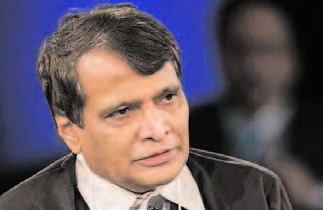The bleak state of the economy has cast a shadow on the railways as well. Railway Minister Suresh Prabhu’s presentation of window-dressed accounts barely hid the fact that the railways would have reported a loss had its skilled accountants not trimmed outlays such as the provision for replacing over-aged assets. But Prime Minister Narendra Modi remains undeterred by adverse market conditions and continues to dream big on borrowed money from public sector institutions to foreign governments. The idea is to extricate the railways from the low growth trap by creating modern assets with a massive infusion of borrowed money. Modi’s plans to run faster passenger trains and ensure time-tabled freight movement will be partly facilitated by two freight corridors initiated by the previous government.
The borrowed money would jump-start more such corridors to segregate passenger and freight traffic and ensure both got speeded up. As things stand, half of this money will fund the bullet train project from Mumbai to the Prime Minister’s home state. This approach has its risks. What happens if the extra capacity is not utilized?Scouting for funds is only half the story. The railway budget has tried to change the Railway Board’s functioning. But the government has clearly lost its zest for surgical reforms. The move to shed non-core activities is at a glacial pace. The pricing and development bodies announced last year are still on paper. Freight rates remain among the steepest in the world in order to make up for the losses on passenger tickets.
Like all previous dispensations, this government has made major improvements in privileged travel and promised several shiny toys. But trains in the hinterland continue to be rickety and poor travel conditions have led to a decline in patronage. Indian Railways is a symbol of nationhood. Every Indian has a sense of shared belonging in this institution. The business class and the well-off are entitled to their comforts and expectations and the government is well within its mandate to meet them more than half-way. But the narrative seems to be veering away from the needs and requirements of the ordinary Indian.
